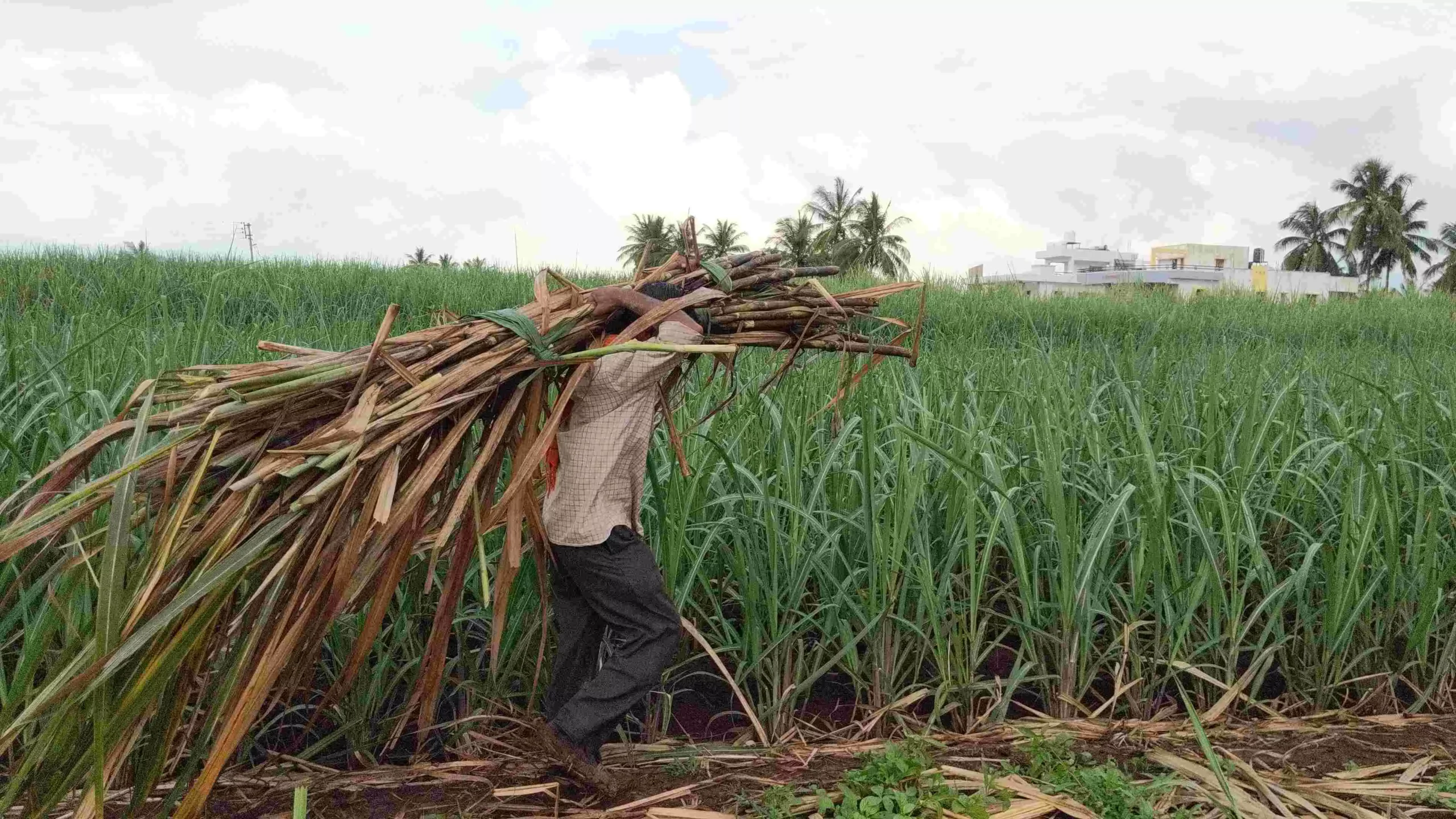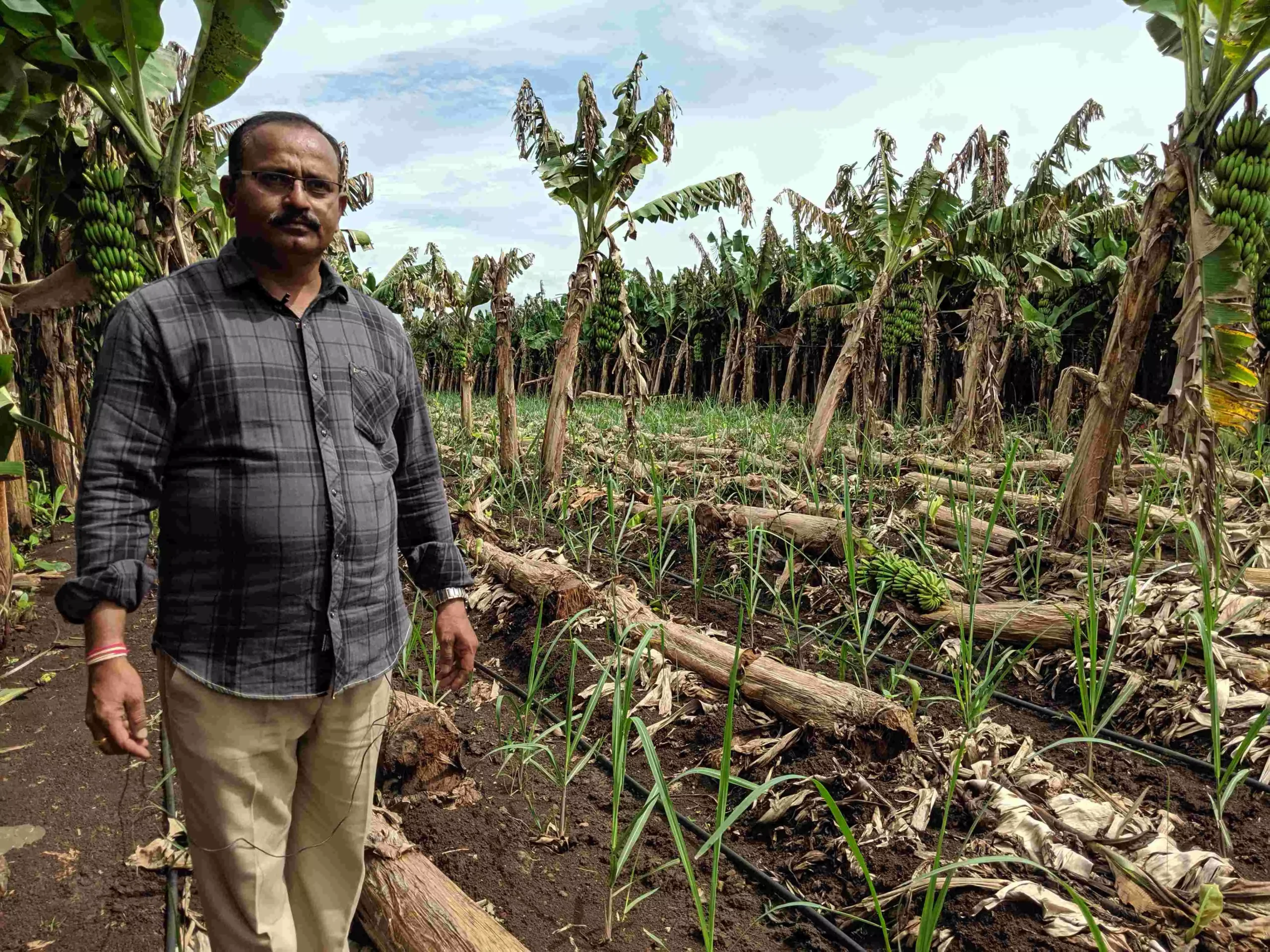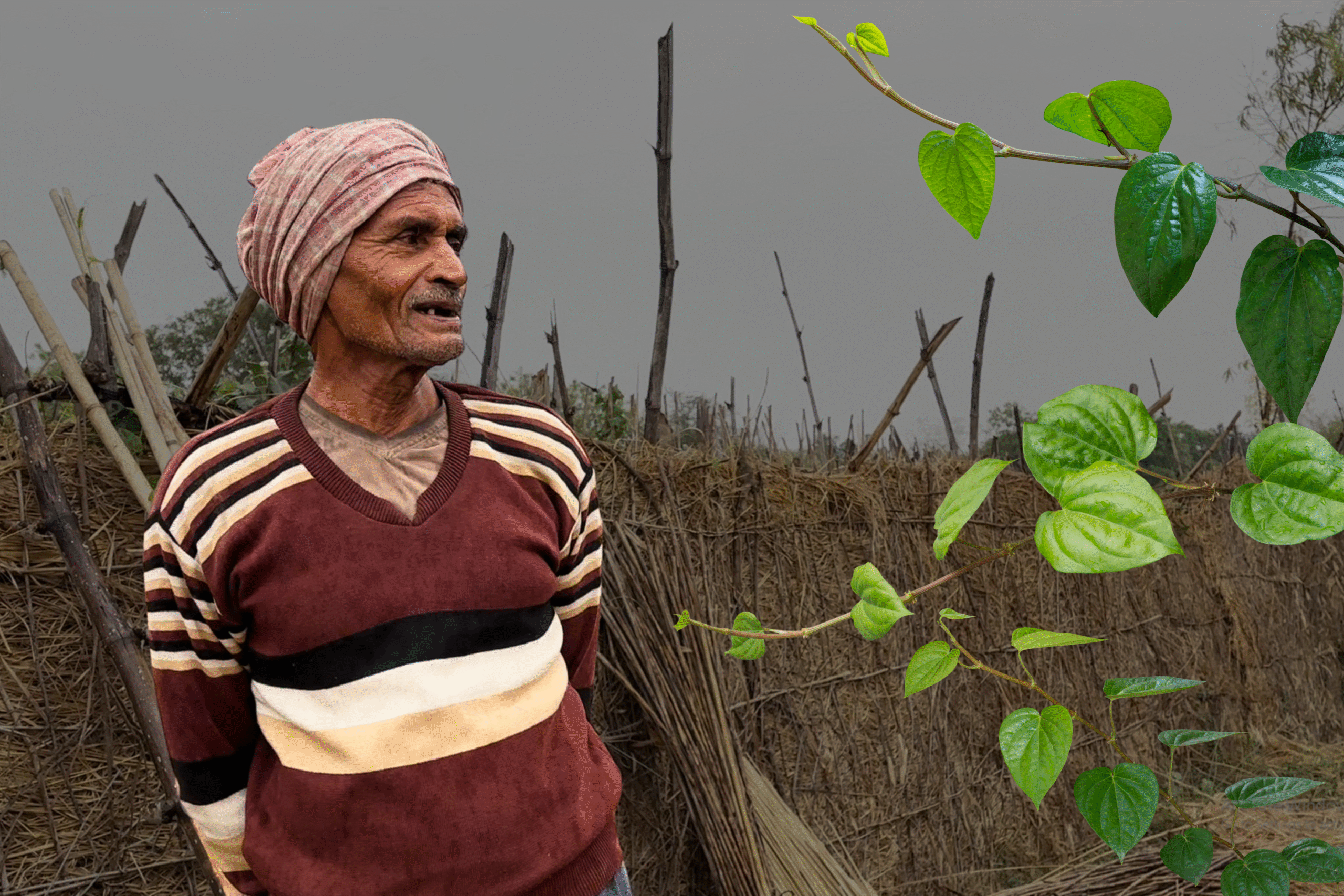Suresh Kabade, who lives in of
Maharashtra’s Sangli district, produces more than 100 tonnes of sugarcane from
each acre of his fields. It is noteworthy that his single acre produces far
more than any farmer in other states. A record producer of sugarcane, this
farmer earns Rs 50-60 lakh annually from sugarcane alone. More than 7 lakh
farmers follow him over social media and several more throng his village to
learn the finer aspects of sugarcane cultivation from across the country.
Recently, the Maharashtra government
had declared one of the biggest awards in the field of agriculture. During this
time, Gaon Connection team had
reached Kabade’s village Karanwadi which is situated about 500 kms from Mumbai
in Sangli district. This village, situated upon the Pune-Bengaluru highway, has
70 per cent of its farmers following the lead of Suresh to produce 100 tonnes
sugarcane per acre.
How
does he manage such a good yield? In answer to this, Suresh gets down to one of
his fields and grabs a sugarcane saying, “You observe its girth — at just 8
months it is already thickened so much. Previously, even we produced 300-400
quintals per acre, but now we harvest 1,000-1,100 quintal per acre. We have,
for this purpose, deployed several newer methods right from seed selection to
sowing and use of pesticides and fertilizers.”
Watch the video here:
Suresh has also developed newer breed
(species-86032) of seeds for better sugarcane production. Developed with tissue
culture method these seeds call for lesser upkeep and give a good yield besides
being pest resilient. Suresh may be educated till 9th grade, but even
agricultural scientists and engineers now approach him to learn more about
agriculture. As per Suresh, his major time is devoted to the fields
endeavouring to maximize production while keeping the cost minimal.
Even that day it had rained heavily,
the black clumpy soil of this region of Maharashtra was sticking to the feet
like a magnet, making it difficult to move about in the fields but, unfazed, he
took the team and neighbouring sugarcane farmers to the fields. He tells to
keep in mind four things to improve sugarcane production.
Soil: Do not burn
crop residue upon the fields, adopt crop cycle
Rubbing away the dirt from his feet,
he informed, “This soil is the reason behind our bountiful crops. Previously
even we used to burn away sugarcane crop residues and throw away trunks of
plantain, but now incorporate everything in the soil. The field in which we sow
sugarcane one year, the next year it is sown with either gram or banana. We
bear in mind crop rotation and use balanced quantities of fertilizers.”
Benefits of sowing in a line: Easier to
plough and till with the tractor and to put fertilizers.
Suresh keeps a distance of 5-6 feet
between the sugarcanes. He maintains the rows in precision of a digital
program. The fertilizer is also put in such a way so as to maximize its benefit
to the plant.
Suresh undertakes companion farming of
banana and sugarcane. Beside the rows of sugarcane, a worker digs up a narrow passage
and another worker puts fertilizers in it and the third covers it up so that
the fertilizers do not vaporize due to sunlight and reach the roots given full
nourishment there. Besides, row farming makes it easy for the tractor to plough and till and spraying of fertilizers and pesticides. Also due to a bigger gap between
the plants, sunlight manages to reach right till the base of each plant.

Sugarcane from Suresh’s fields is taken by the farmers to their fields in Maharashtra, Karnataka, Gujarat and Madhya Pradesh.
Seed selection: Sugarcane
with lesser sugar to be used for sowing
Showing the sugarcane which was sown
in June, Suresh informed, “Most of the farmers in Sangli sow sugarcane between
June to August, while I finish my sowing by July. The most important aspect of
sugarcane farming is the selection of the best seeds. I have developed, with
the help of tissue culture method, a sugarcane variety (species-86032) of my
own. The seed which I use and give to others is 10 months old and has a lesser
amount of sugar which reduces the risk of diseases.”
Do not tie sugarcane
with green leaves
Suresh said: “In many states, the
farmers tie up the sugarcanes to straighten them up. I don’t subscribe to this
method as I believe sugarcane derives nutrition from its leaves and tying them
up deprives the plant of its nutrition. Only those leaves fell which have
already given nutrition to the plant. We have a saying in Maharashtra — the
farmer rises whose sugarcane falls.”
More than Rs 2
lakh income per acre
Suresh said: “Our fields produce on an
average 100 tonnes sugar cane per acre. Maharashtra has the rate of Rs 3,000
per tonne of sugarcane, which means we get Rs 3 lakh per acre. Out of this, Rs 70,000-80,000
is the cost. Also, every year we grow 15-20 acres of sugarcane, 5-6 acres of
banana and turmeric each within crop of gram.
A major source of Suresh’s income is
the sugarcane seeds. He sows sugarcane in 5-6 acres for the seeds which readies
in 10 months. He sells this sugarcane for Rs 9,000 rupees per quintal which
fetches him an income of about Rs 3.5 lakh per acre. Sugarcane from his fields
is taken by the farmers to their fields in Maharashtra, Karnataka, Gujarat and
Madhya Pradesh.

Suresh has developed newer breed (species-86032) of seeds for better sugarcane production.
Several thousand
followers on Facebook, Whatsapp and YouTube
Although not highly educated, Suresh
still has managed to learn greatly about farming with his field as labs. Now he
is approached by others who seek to learn his farming methods. He is the admin
of Facebook group Sugarcane Growers of India, which has 47 lakh followers. He
has a dedicated YouTube channel which he runs with his associate Amol Patil. He
also has several WhatsApp groups whereby he shares sugarcane related
information with several thousand people each year. Amol Patil informs that in
a month their videos manage to reach about 7 lakh people combining all
platforms. One can contact Suresh Kabade at 9403725999.
What do the
farmers have to say?
Sureshji is a progressive farmer.
Following his example, learning from him, other farmers also have begun doing
advanced sugarcane farming. Karanwadi stands out as a village because all its
farmers do sugarcane farming and 70 per cent of these manage to grow 100 tonnes
per acre. I am engaged too in sugarcane farming for the past seven years and
grow 20-25 acres of sugarcane each year. I have learned a lot from Kabade.
Suresh Anna (big brother) must be looked upon as a role model at national
level.
Amol
Patil, sugarcane farmer, Sangli
We had first met with Suresh Anna in
2007 when we had approached him for advice. Since then we follow his
methodology. Previously we produced 40-45 tonnes of sugarcane averagely on an
acre whereas now we produce 100-125 tonnes.
Rajaram
Sakhawale, sugarcane farmer from the village adjoining Sangli
Read Also: Sugarcane farmers, sugar mill owners lock horns over pending dues
Watch Also:




















